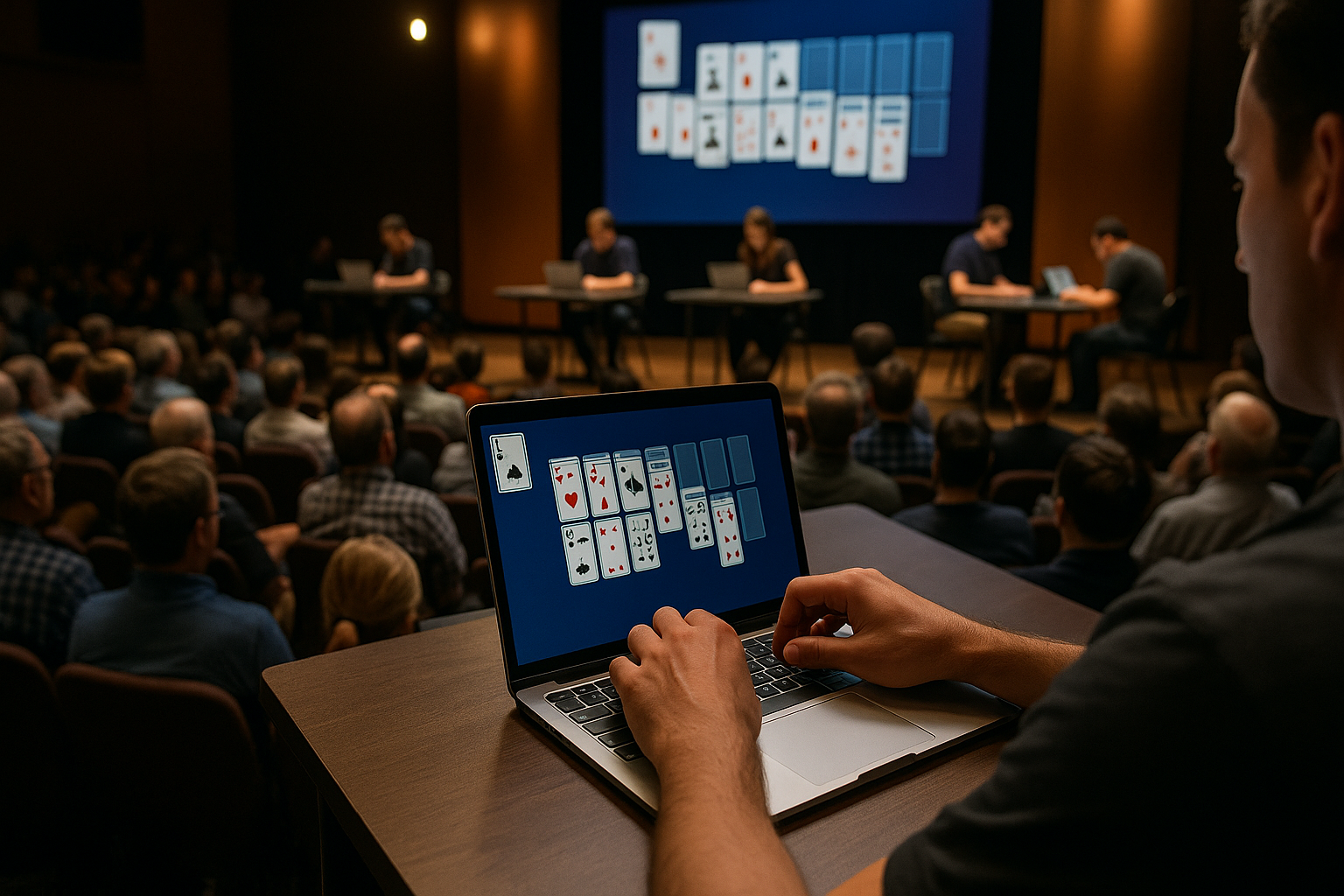
I Was in the Crowd When Solitaire Became a Spectator Sport
I didn’t expect a hush that deep. Hundreds of us packed into a bright hall—parents with kids on their shoulders, office folks still wearing badges, a few grandparents in team scarves—and when the first card turned, the room breathed in as one. This was Microsoft celebrating an old ritual with a live tournament, turning quiet clicks into applause. The giant screens showed a tidy tableau, camera hovering over hands that moved with surgeon calm. For a game we usually play alone—the quiet classic we all know as Solitaire—the energy felt, strangely, like a playoff game.
The Day “Patience” Found a Crowd
They called the players by first name, and the audience did that gentle clap people save for chess and piano recitals. A commentator explained the state of play without hype: where the blockers sat, when a redeal might help, why a face-down flip mattered more than a flashy shuffle. When a tricky column finally cleared, everyone erupted—cheers, a few whoops, even a little laughter of relief.
At one point, a competitor hovered over the stock and didn’t deal. Ten seconds. Fifteen. You could feel the debate ripple through the rows: “Smart patience or missed chance?” The player chose patience—one more deliberate sequence, a reveal, a clean fit—and the place burst like a soda can. I remember thinking: this is the same small joy I get on my own couch, scaled up and shared.
What the Crowd Taught Me About the Game
Pacing beats panic. From the seats you could see nerves tempt early stock deals. The calm players squeezed every last safe move first—then refreshed the board. It was restraint as strategy.
Information is momentum. Everyone learned to root for face-down flips; new information turned maybe-paths into clear routes. We started counting “good flips” the way a tennis crowd counts first serves.
Pattern recognition travels. Even folks who didn’t speak card jargon were whisper-mapping ladders: “If that five moves, the four opens, then three drops.” We were all doing the same mental dance the pros were doing, just at balcony speed.
A graceful reset is a superpower. When a line clogged, the best players reset with purpose—undoing a half-baked plan to restore a better one. From our vantage, that humility looked like confidence.
Three Moments I Won’t Forget
- The standing quiet. Before one final, the room settled into a silence so complete you could hear sleeves brush felt. It wasn’t tension—it was shared attention.
- The cross-generational coaching. A grandparent behind me explained, softly, why leaving an empty space for a king later might win the game. The kid nodded like they’d just learned a magic trick.
- The long game. A competitor took the “slow” route—no fireworks, just clean decisions. The clock ticked. Nobody minded. When the last sequence slid off, the applause felt like gratitude.
A Tiny “Bleachers” Drill to Bring Home
You can borrow a slice of that arena focus and use it in your next session:
- Two-pass scan: Before moving, trace two routes that flip a face-down card within three actions.
- One rule play: Make only moves that either (a) flip a card or (b) finish a clean descending run.
- Name the pause: If you hesitate more than three seconds, say why: “waiting for a clean fit,” “stock feels premature,” “need an empty space.”
- Reset with intent: If the position muddies, undo back to the last clear fork and try the other route. No drama—just direction.
- One-line note: After the round, jot a five-word takeaway. (“Early flips won it today.”)
Do this for a week, and you’ll feel the same steadiness I saw from the seats.
Why That Day Still Matters
It reminded me that this unassuming pastime is a shared language. In that hall, strangers synchronized around patience, clarity, and small, satisfying wins. The spectacle wasn’t pyrotechnics—it was attention. A simple game asked for ours, and we gladly gave it.
Bring the Arena Energy Back to Your Table
You don’t need a stage to feel that focus. Take a quiet ten minutes, deal a fresh layout, and treat the next round like the room is watching—not to add pressure, but to honor your decisions. And if you’re coming back after a long break, or trying the game for the first time, start with something familiar and friendly—try a calm round of solitaire online, and see how quickly the crowd’s lessons turn into your own.
